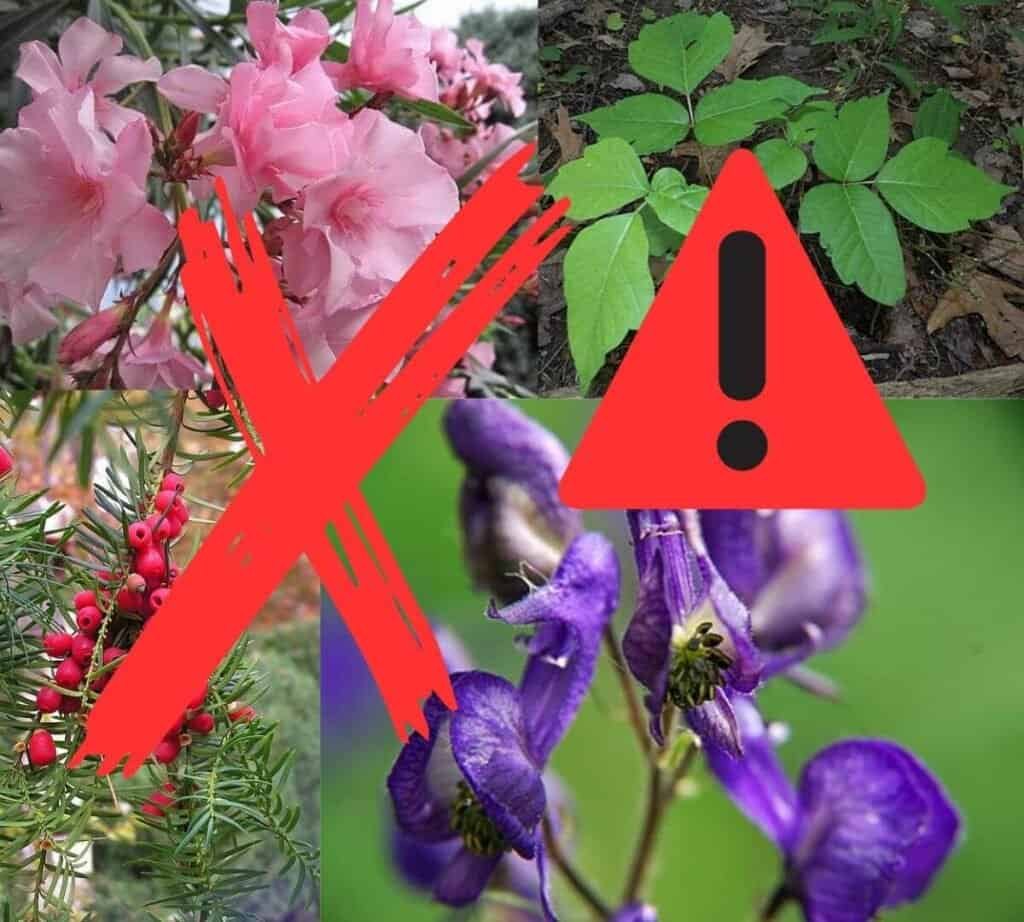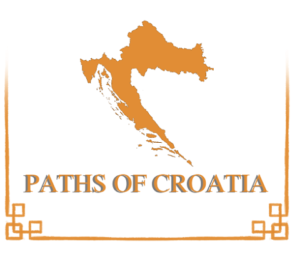
Croatia, with its stunning landscapes and diverse flora, is a captivating destination for travelers seeking natural beauty and outdoor adventures.
However, amidst the breathtaking wilderness, there are hidden dangers that every visitor should be aware of, the poisonous plants.
Understanding these toxic flora can be crucial to ensuring a safe and enjoyable exploration of this picturesque country.
Whether you’re a seasoned hiker who appreciates the breathtaking Croatian hiking trails, a nature enthusiast, or someone simply enjoying a leisurely stroll through Croatia’s landscapes, this information is invaluable because these hazardous botanical residents of Croatia should be avoided at all costs!
1. Poison Oak
Poison oak (Toxicodendron diversilobum), with its three-leaf clusters, is a plant you should be wary of when exploring the natural beauty of Croatia. This troublesome plant can be found in various regions, including coastal areas and forests.

Characteristics: Poison oak is known for its leaves, which typically form three leaflets with smooth or slightly toothed edges. The leaves can range in color from green to red, depending on the season.
Regions in Croatia: In Croatia, you’re likely to encounter poison oak in coastal areas, particularly in the Mediterranean and Adriatic regions, as well as in wooded areas.
Dangers: Poison oak contains a potent resin called urushiol, which, when it comes into contact with the skin, can cause severe allergic reactions. These reactions often manifest as redness, itching, and blisters.
Identification and Prevention: Recognizing poison oak is the first step to prevention. Learn to distinguish its leaves and avoid touching them. If you suspect contact with poison oak, wash the affected area with soap and water as soon as possible to minimize the risk of a reaction. Always wear protective clothing when venturing into areas where poison oak may be present.
2. Poison Ivy
Another hazardous plant to be cautious of in Croatia is poison ivy (Toxicodendron radicans). Its three leaflets can resemble other harmless plants, making it essential to know how to identify them.

Characteristics: Poison ivy is often characterized by its leaves with three leaflets, which can vary in size and shape. They may appear glossy and can be green or reddish in color.
Habitat in Croatia: You can find poison ivy in various locations in Croatia, including forests, meadows, and along riverbanks.
Skin Reactions: Poison ivy contains urushiol, the same allergenic resin found in poison oak. When this resin comes into contact with the skin, it can lead to itching, rashes, and blisters.
Precautionary Measures: To prevent contact with poison ivy, familiarize yourself with its appearance and take extra care when walking through areas where it grows. Wear long sleeves and pants, and if you do come into contact with poison ivy, wash the affected area immediately to minimize the risk of an allergic reaction.
3. Mezereum
Mezereum (Daphne mezereum), also known as spurge laurel, is a deceptively charming shrub found in parts of Croatia. Its vibrant red berries and delicate appearance can be alluring, but it conceals a toxic secret.

Characteristics: Mezereum is a small shrub with lance-shaped leaves and clusters of fragrant, pink, or reddish flowers. These flowers eventually develop into bright red berries.
Common Locations: You may encounter mezereum in hilly and wooded regions, as well as in some coastal areas of Croatia.
Toxicity: While mezereum’s red berries may seem tempting, they are highly toxic when ingested. The entire plant contains poisonous compounds, which can lead to severe symptoms if touched or consumed.
Recognition and Safety: To stay safe, it’s vital to recognize mezereum and avoid any contact. Teach yourself and your travel companions to identify the plant and never consume any part of it. Keep a safe distance from these deceptive beauties.
Monkshood
Monkshood (Aconitum napellus), also known as wolfsbane, is an eye-catching but perilous plant found in Croatia. Its deep blue or purple hood-shaped flowers make it stand out, but its dangers lurk beneath its alluring appearance.

Characteristics: Monkshood is easily identified by its helmet-shaped flowers, which can range in color from deep blue to purple. The leaves are palmately lobed and dark green.
Distribution: Monkshood can be found in various regions in Croatia, including mountainous and forested areas.
Toxicity: This plant is one of the most toxic in Croatia. Even touching its leaves can lead to symptoms of poisoning, which can be severe, including nausea, muscle weakness, and heart irregularities.
Identification and Caution: Recognizing monkshood at time is crucial because it’s so beautiful that you might get an urge to get close to it. If you encounter this plant, do not touch it. Keep a safe distance, and educate yourself and your fellow travelers about its distinctive appearance.
5. Belladonna
Belladonna (Atropa belladonna), also known as deadly nightshade, is another perilous plant to be cautious of in Croatia. It’s known for its dark, shiny berries and bell-shaped flowers.

Characteristics: Belladonna has dark green, glossy leaves, and it produces dark purple to black, shiny berries. Its flowers are bell-shaped and purplish.
Croatian Presence: You may come across belladonna in forests, grassy clearings, and occasionally in cultivated areas in Croatia.
Toxic Nature: All parts of the belladonna plant are highly toxic, containing tropane alkaloids. Ingesting even a small amount can have severe effects on the nervous system.
Recognition and Safety Measures: It’s crucial to recognize belladonna’s distinctive features and to avoid contact with it. Never consume any part of this plant, and exercise extreme caution when exploring areas where it grows.
6. Oleander
Oleander (Nerium oleander) is a strikingly beautiful but perilous plant that can be found in various regions of Croatia. Its vivid, funnel-shaped flowers and lush green leaves can be captivating, but they hide a potent toxin.

Characteristics: Oleander is known for its vibrant flowers, which can be pink, white, or red. The plant has long, lance-shaped leaves and is often used as an ornamental shrub.
Prevalence in Croatia: Oleander is commonly found along the coast of Croatia, especially in Mediterranean areas, and is frequently used for decorative purposes in gardens and parks.
Toxicity: All parts of the oleander plant, from its flowers to its leaves, contain toxic compounds known as cardiac glycosides. Ingesting or even touching the plant can lead to serious health issues, including heart problems.
Identification and Caution: Recognizing oleander is easy, you’ll be seeing it every day if you plan to explore coastal regions in Croatia. Avoid any physical contact with the plant, but don’t fear it, it won’t hurt you if you observe it from a distance or pass by it.
7. Yew
The yew tree (Taxus baccata) is another toxic plant that can be found in Croatia. Its evergreen foliage and bright red berries can be alluring, but it harbors a potent poison.

Characteristics: Yew trees have dark green, needle-like leaves and produce red, berry-like structures. They are often used for ornamental purposes and can be found in various parts of Croatia.
Distribution in Croatia: Yew trees can be found in a variety of locations in Croatia, including gardens, parks, and forested areas.
Toxic Properties: Every part of the yew tree, except the fleshy part of the berries, is toxic. Ingesting any other part of the tree can have fatal consequences.
Recognition and Safety: Do not ingest any part of the plant, and avoid contact with the leaves and other toxic components. Moreover, this plant is typical for Croatian parks and gardens, so be sure no children come in contact with the plant.
Conclusion
In the enchanting landscapes of Croatia, nature reveals its beauty in countless forms, from lush forests to scenic coastlines. However, amid the natural splendor, certain dangers can go unnoticed, and that’s why we created this article for all travelers who want to explore Croatia.
This article has shed light on some of the most treacherous plants in Croatia, ones you certainly shouldn’t touch. From poison oak and ivy to mezereum, monkshood, belladonna, oleander, and yew, each of these plants harbors toxic secrets that can lead to skin irritation, poisoning, or even fatal consequences.
Recognizing these plants and the regions where they can be found is your first line of defense. Stay informed and share this knowledge with fellow travelers to ensure their safety. Here’s a quick summary of what you need to remember:
- Poison Oak and Poison Ivy: Recognize their distinct three-leaf clusters and avoid contact, especially in coastal and forested areas.
- Mezereum: Beware of its red berries and pink flowers; it’s often found in hilly and wooded regions.
- Monkshood: Be cautious of the striking purple-blue flowers and palmately lobed leaves in mountainous and forested areas.
- Belladonna: Watch out for dark green, glossy leaves, and dark berries, especially in forests and grassy clearings.
- Oleander: Stay away from its pink, white, or red flowers, often found along the coastal regions.
- Yew: Avoid all parts of the yew tree except for the fleshy part of the berries, found in various locations in Croatia.
Go ahead and explore the stunning landscapes of Croatia, but do so with a watchful eye and a keen awareness of the perils that can lurk beneath the surface of its natural beauty.
Travel smart, stay safe, and create memories that will last a lifetime!
